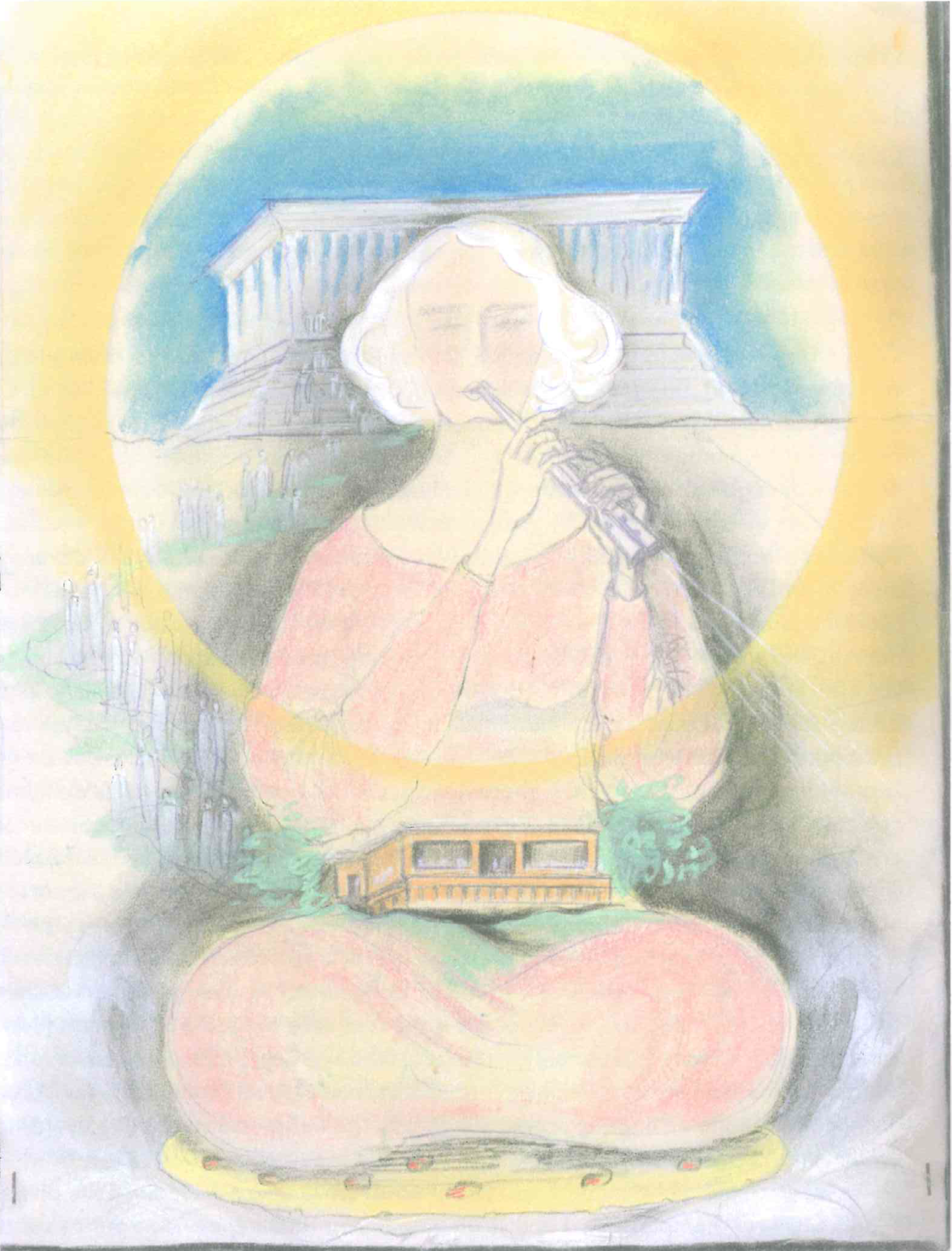
This course is about cosmograms: concrete objects which represent the universe as a whole. Such images have been part of religion, science, and politics since ancient times. Studying their content and uses is a way of making sense of the relationships between different kinds of ideas, and their impact on everyday life. Cosmograms are particularly revealing of the shifts in knowledge and beliefs in early modern Europe, as Aby Warburg showed in his Mnemosyne Atlas. In this course we will reflect on important cosmograms and different methods for approaching them, thinking in particular about the relationships among science, religion, art and technology in the modern era.
In 2026 the course have a special emphasis: a unique holding in the Warburg’s Photographic Collection, the Eranos Archive. Assembled by the Dutch-English artist-researcher, Olga Fröbe-Kapteyn, this is a collection of cosmological images: symbols associated with the unconscious, across traditions and genres, on themes including the labyrinth, the great mother, and alchemy. Fröbe-Kapteyn created this archive as part of her work as organizer of the Eranos Meetings, annual week-long conferences held at her home in Ascona, Switzerland, starting in the early 1930s and continuing after her death in 1962.
The meetings brought together scholars in religions, philosophy, art, anthropology, physical science and psychology, with the aim of comparing symbols, spiritual practices, and cosmologies East and West, and worldwide. Carl Jung attended until 1952. While few of the speakers were “Jungians,” his concept of archetypes of the collective unconscious informed discussions. We will study the background, ideas, and activities of the participants in this unique, influential, neglected development in 20th century European intellectual history. Eranos stood at the intersection of three interests: Fröbe-Kapteyn’s vision of Eranos as the base for a new, synthetic and spiritual science; Jung’s wish to develop scientific psychology through engagement with experts on religion worldwide; and the specialized university-based expertise of the other scholars, who embraced the informal but exclusive setting as a place in which to examine dimensions of religion neglected in academic study.
In 2026 the course have a special emphasis: a unique holding in the Warburg’s Photographic Collection, the Eranos Archive. Assembled by the Dutch-English artist-researcher, Olga Fröbe-Kapteyn, this is a collection of cosmological images: symbols associated with the unconscious, across traditions and genres, on themes including the labyrinth, the great mother, and alchemy. Fröbe-Kapteyn created this archive as part of her work as organizer of the Eranos Meetings, annual week-long conferences held at her home in Ascona, Switzerland, starting in the early 1930s and continuing after her death in 1962.
The meetings brought together scholars in religions, philosophy, art, anthropology, physical science and psychology, with the aim of comparing symbols, spiritual practices, and cosmologies East and West, and worldwide. Carl Jung attended until 1952. While few of the speakers were “Jungians,” his concept of archetypes of the collective unconscious informed discussions. We will study the background, ideas, and activities of the participants in this unique, influential, neglected development in 20th century European intellectual history. Eranos stood at the intersection of three interests: Fröbe-Kapteyn’s vision of Eranos as the base for a new, synthetic and spiritual science; Jung’s wish to develop scientific psychology through engagement with experts on religion worldwide; and the specialized university-based expertise of the other scholars, who embraced the informal but exclusive setting as a place in which to examine dimensions of religion neglected in academic study.
